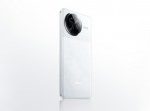New rumors regarding the AMD RDNA 3 “Radeon RX 7000” GPUs reveal that AIBs already have test units with them & offer huge gains over RDNA 2.
AMD Radeon RX 7000 “RDNA 3” GPU Lineup Rumor: 2x Faster Raster & Over 2x Ray Tracing Performance Versus RDNA 2, Power Efficiency Looks Amazing!
The latest rumors come from Greymon55 who suggests that AIBs already have AMD Radeon RX 7000 GPUs based on the RDNA 3 architecture being tested in their labs. The leaker didn’t quote partners but did give us some early performance estimates which sound really good. We do know that AMD is working on its Navi 31 flagship GPU for launch next month on the 3rd of November so it is likely that these are the flagship chips that are being tested at the moment to tackle NVIDIA’s GeForce RTX 4090 & RTX 4080 graphics cards.
Some AIBs have already got the chips and are testing them.
— Greymon55 (@greymon55) October 19, 2022
2x raster
— Greymon55 (@greymon55) October 19, 2022
more
— Greymon55 (@greymon55) October 19, 2022
AMD RDNA 3 “Radeon RX 7000” GPU With 2x Raster & Over 2x RT Performance?
As per the leaker, the AMD RDNA 3 GPUs featured on the Radeon RX 7000 series graphics cards are delivering up to a 2x performance increase in pure rasterization workloads and over 2x gains within ray tracing workloads. It is not mentioned in the RDNA 2 GPU is the RX 6900 XT or RX 6950 XT but even if we look at the 6900 XT, the RDNA 2 chip offered superior performance in raster vs the RTX 3090 and came pretty close to the RTX 3090 Ti while the RX 6950 XT excelled over it. A 2x improvement in this department would mean that AMD would easily compete and even surpass the performance of the RTX 4090 in a large section of gamers.
In ray tracing, a gain over 2x means that AMD might end up close to or slightly faster than the RTX 30 series “Ampere” graphics cards, depending on the title. The Ada Lovelace RTX 40 series cards do offer much faster ray tracing capabilities, offering close to 2x gains in ray tracing performance over the RTX 30 lineup. So ray tracing will see a major improvement but it may not be able to close the gap with RTX 40 series.
Furthermore, there’s no word on new AI-assisted capabilities featured on RDNA 3 GPUs to help with upscaling technologies such as FSR. NVIDIA has integrated its new 4th Gen Tensor core architecture that enables “Frame Generation” for 2-4x performance gains in AAA titles that support it. The technology performs great where it works but there are still some issues that should be sorted out as the tech matures.
Reference TBP of AMD RDNA 3 GPUs Reportedly Looks “Amazing”
Lastly, the leaker states that the reference TBP looks great and we don’t know if that’s comparing it against the RTX 40 series or the RDNA 2 lineup. AMD has already said that their power figures will be much lower than the competition with the RDNA 3 “Radeon RX 7000” GPU lineup.
reference’s TBP is amazing.
— Greymon55 (@greymon55) October 19, 2022
“It’s really the fundamentals of physics that are driving this,” Naffziger explained. “The demand for gaming and compute performance is, if anything, just accelerating, and at the same time, the underlying process technology is slowing down pretty dramatically — and the improvement rate. So the power levels are just going to keep going up. Now, we’ve got a multi-year roadmap of very significant efficiency improvements to offset that curve, but the trend is there.”
“Performance is king,” stated Naffziger, “but even if our designs are more power-efficient, that doesn’t mean you don’t push power levels up if the competition is doing the same thing. It’s just that they’ll have to push them a lot higher than we will.”
Sam Naggziger (AMD’s SVP & Product Technology Architect) via Tomshardware
AMD confirmed that its RDNA 3 GPUs will be coming later this year with a huge performance uplift. The company’s Senior Vice President of Engineering, Radeon Technologies Group, David Wang, said that the next-gen GPUs for Radeon RX 7000 series will offer over 50% performance per watt uplift vs the existing RDNA 2 GPUs. Some of the key features of the RDNA 3 GPUs highlighted by AMD will include:
5nm Process Node
Advanced Chiplet Packaging
Rearchitected Compute Unit
Optimized Graphics Pipeline
Next-Gen AMD Infinity Cache
Enhanced Ray Tracing Capabilities
Refined Adaptive Power Management
>50% Perf/Watt vs RDNA 2
AMD’s SVP & Technology Architect, Sam Naffziger, has highlighted that the next-generation RDNA 3 GPUs featured on the Radeon RX 7000 GPUs and next-gen iGPUs, will going to offer a range of new technologies including a refined adaptive power management tech to set workload-specific operation points, making sure that the GPU only utilizes the power required for the workload. The GPUs will also feature a next-gen AMD Infinity Cache which will offer higher-density, lower-power caches and reduced power needs for the graphics memory.
What’s Next?
Looking ahead, we’re continuing our push for more efficient gaming with AMD RDNA 3 architecture. As the first AMD graphics architecture to leverage the 5nm process and our chiplet packaging technology, AMD RDNA 3 is on track to deliver an estimated >50 percent better performance per watt than AMD RDNA 2 architecture – truly bringing top-of-the-line gaming performance to gamers in cool, quiet, and energy-conscious designs.
Contributing to this energy-conscious design, AMD RDNA 3 refines the AMD RDNA 2 adaptive power management technology to set workload-specific operating points, ensuring each component of the GPU uses only the power it requires for optimal performance. The new architecture also introduces a new generation of AMD Infinity Cache, projected to offer even higher-density, lower-power caches to reduce the power needs of graphics memory, helping to cement AMD RDNA 3 and Radeon graphics as a true leaders in efficiency.
We’re thrilled with the improvements we’re making with AMD RDNA 3 and its predecessors, and we believe there’s, even more, to be pulled from our architectures and advanced process technologies, delivering unmatched performance per watt across the stack as we continue our push for better gaming.
2 of 9
The AMD Radeon RX 7000 “RDNA 3” GPU lineup based on the Nav 3x GPUs is expected to launch later this year with reports pitting the flagship Navi 31 launch first followed by Navi 32 and Navi 33 GPUs. A recent rumor also highlighted that the graphics cards will hit retail shelves in December.
AMD RDNA 3 Navi 3X GPU Configurations (Preliminary)
GPU NameNavi 21Navi 33Navi 32Navi 31Navi 3X
CodenameSienna CichlidHotpink BonefishWheat NasPlum BonitoTBD
GPU Process7nm6nm5nm/6nm5nm/6nm5nm/6nm
GPU PackageMonolithicMonolithicMCM (1 GCD + 4 MCD)MCM (1 GCD + 6 MCD)MCM (TBD)
GPU Die Size520mm2203mm2 (Only GCD)200mm2 (Only GCD)
425mm2 (with MCDs)308mm2 (Only GCD)
533mm2 (with MCDs)TBD
Shader Engines42468
GPU WGPs4016304864
SPs Per WGP128256256256256
Compute Units (Per Die) 80326096128 (per GPU)
256 (Total)
Cores (Per Die)512040967680122888192
Cores (Total)5120409676801228816,384
Memory Bus256-bit128-bit256-bit384-bit384-bit x2?
Memory TypeGDDR6GDDR6GDDR6GDDR6GDDR6
Memory CapacityUp To 16 GBUp To 8 GBUp To 16 GBUp To 24 GBUp To 32 GB
Memory Speed16-18 GbpsTBDTBD20 GbpsTBD
Memory Bandwidth512-576 GB/sTBDTBD960 GB/sTBD
Infinity Cache128 MB32 MB64 MB96/192 MBTBD
Flagship SKURadeon RX 6900 XTXRadeon RX 7600 XT?Radeon RX 7800 XT?
Radeon RX 7700 XT?Radeon RX 7900 XT?Radeon Pro
TBP330W~150W~250W~350WTBD
LaunchQ4 2020Q4 2022?Q4 2022?Q4 2022?2023?
Poll Options are limited because JavaScript is disabled in your browser.
The post AMD RDNA 3 “Navi 31” Rumors: Radeon RX 7000 Flagship With AIBs, 2x Faster Raster & Over 2x Ray Tracing Improvement by Hassan Mujtaba appeared first on Wccftech.







